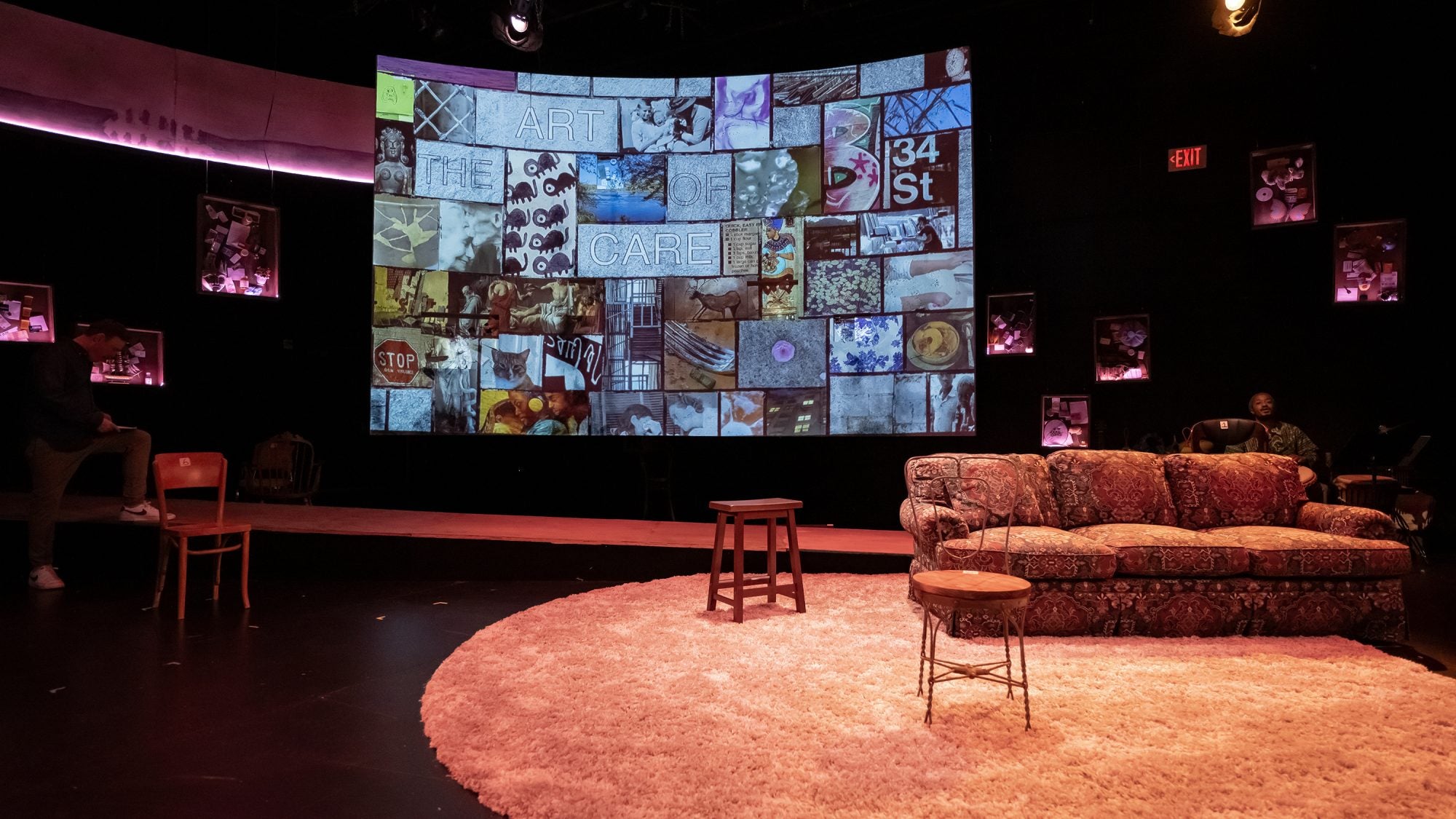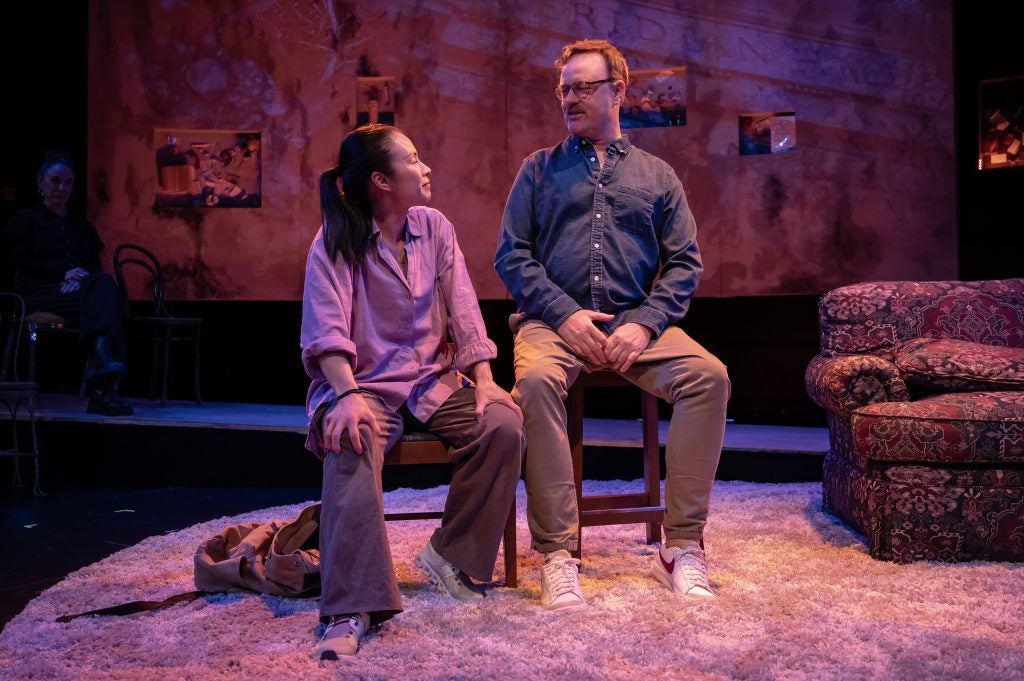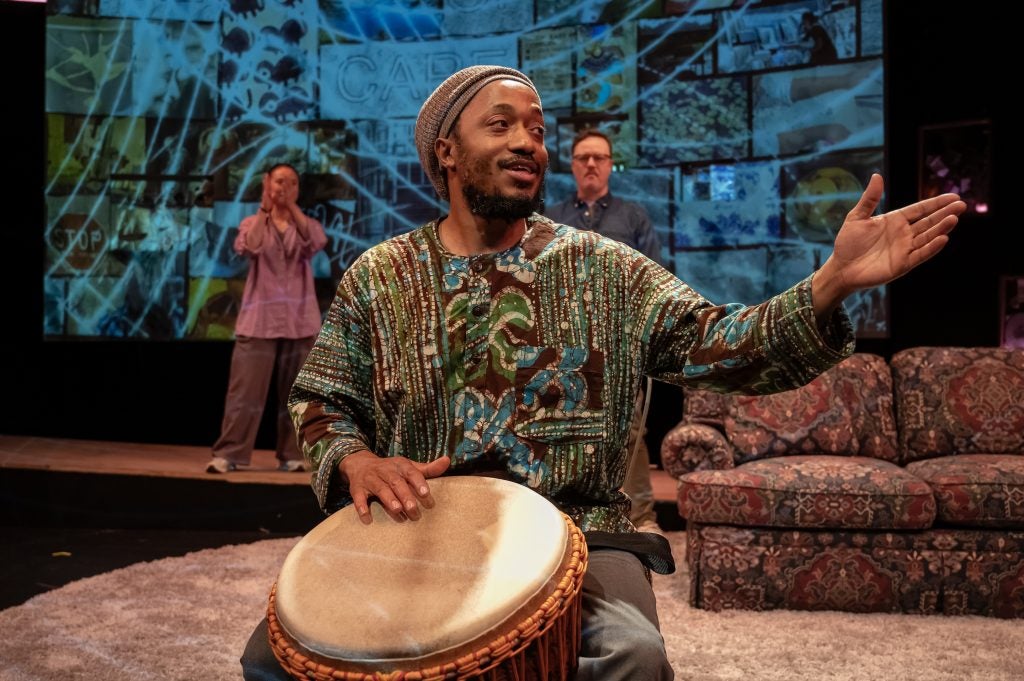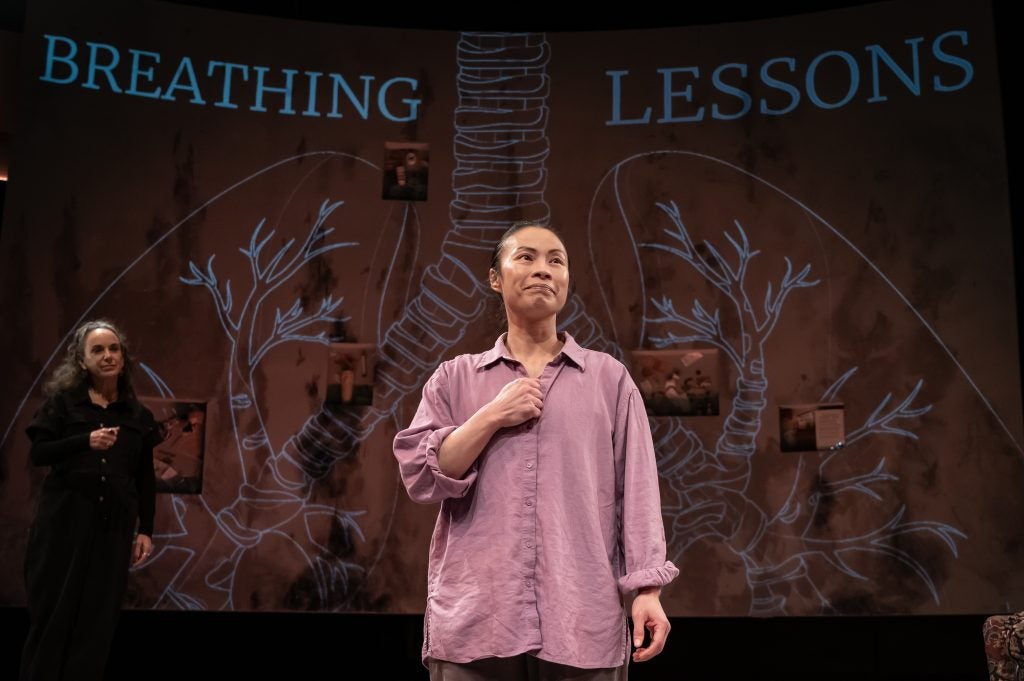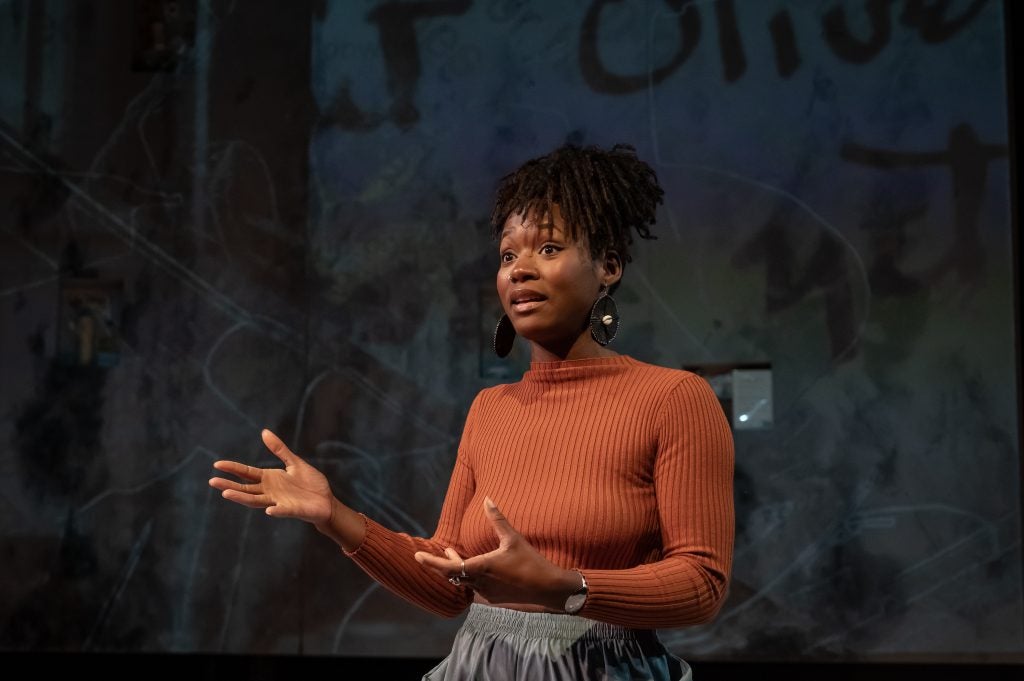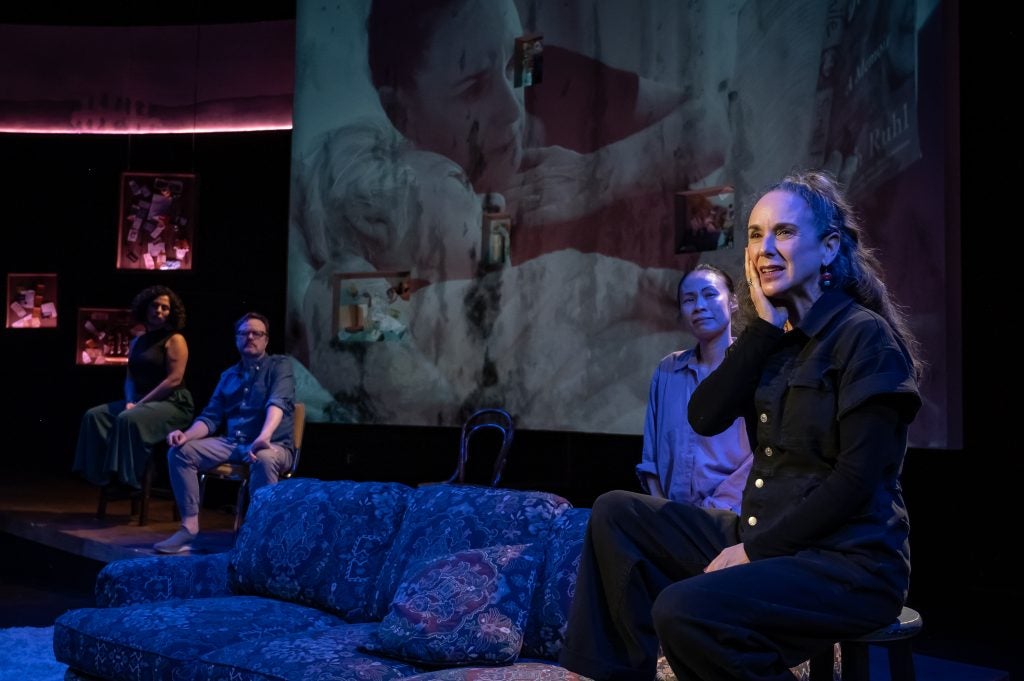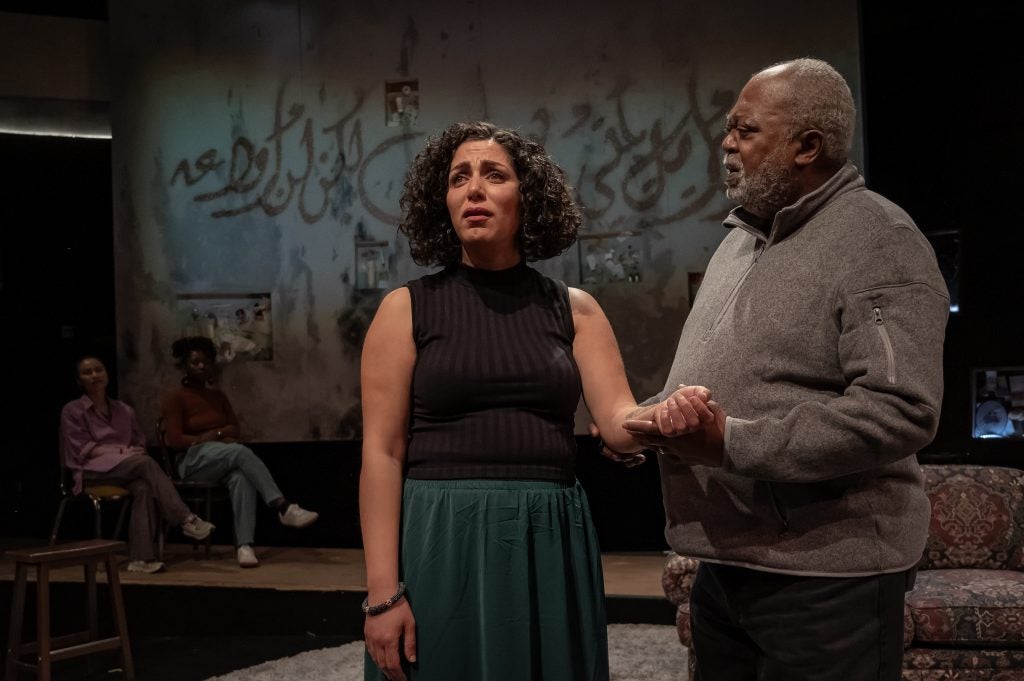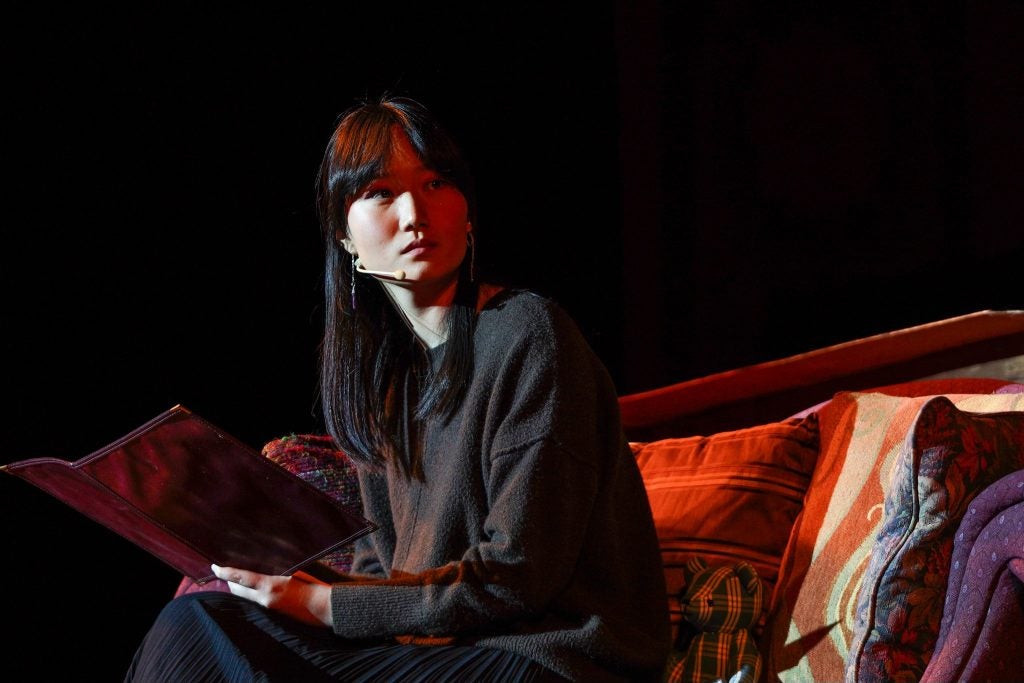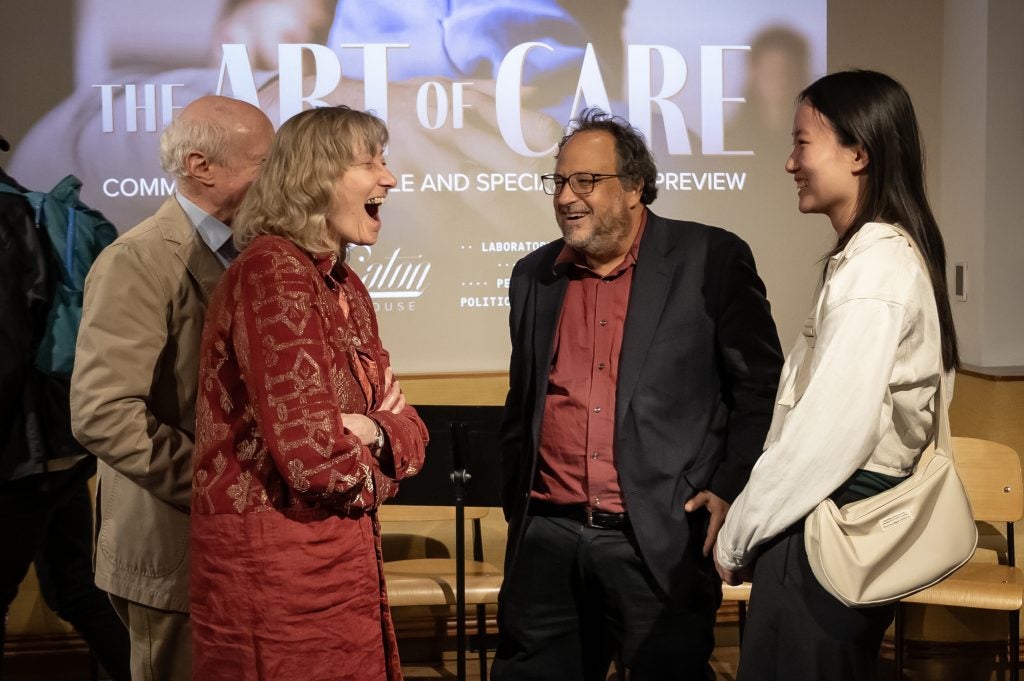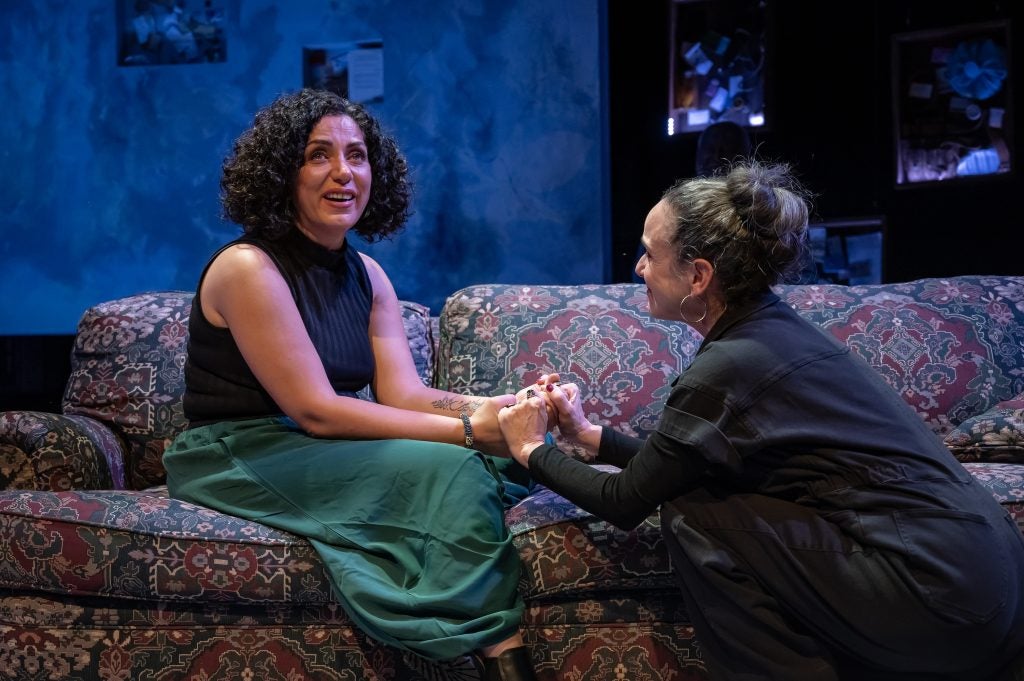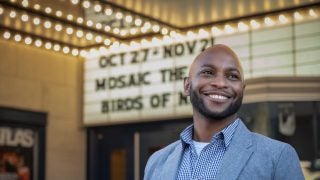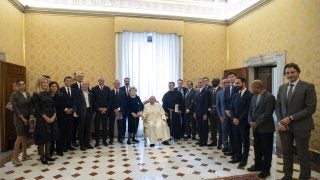In 2021, Tom Story was teaching at Georgetown when he began to feel ill. It wasn’t the flu. It wasn’t COVID-19. But something wasn’t right.
He went to a local hospital for treatment. But things got worse. A blood clot in his heart moved to the stem of his brain, and his brain began to bleed. Story was rushed to MedStar Georgetown University Hospital, where he’d spend the next few weeks recovering in a hospital bed.
“No one could really figure out what was happening,” he said.
It would take months for a diagnosis to come and for Story to fully recover.
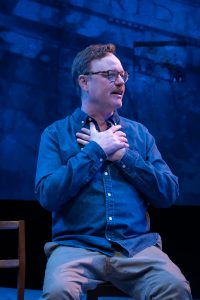
Three years later, Story stood on a stage at the Mosaic Theater in Washington, DC, and shared his health journey beside fellow actors. His story wasn’t about his illness, he said. It was about the loved ones who stood beside him during a scary and precarious time.
“The miracle really is the people who helped me through it, the people I leaned on,” he said. “It’s not a play about illness. It’s a play about care.”
Care is at the heart of Professor Derek Goldman’s new play, The Art of Care, which debuted on Oct. 31. He developed it with the Laboratory for Global Performance and Politics at Georgetown, where he serves as executive director, and in conversations with members of the School of Health, the Global Health Institute, the School of Nursing, MedStar Health and the Medical Humanities Initiative at Georgetown.
The Art of Care tells the stories of caregivers, of nurses and doctors, of teachers, of policymakers, of the seven performers’ own raw stories of receiving and giving care.
“The question of the piece is can we begin to imagine a world where we put care for one another at the center?” said Goldman, who is a professor in the College of Arts & Sciences and School of Foreign Service. “And if we look at our political lives, if we look at war, if we look at all these things, where are we failing at that kind of essential sense of care?”
Goldman is also seeking a broader goal: how telling stories about care can heal, connect and ease feelings of isolation and loneliness. How art itself can be care.
